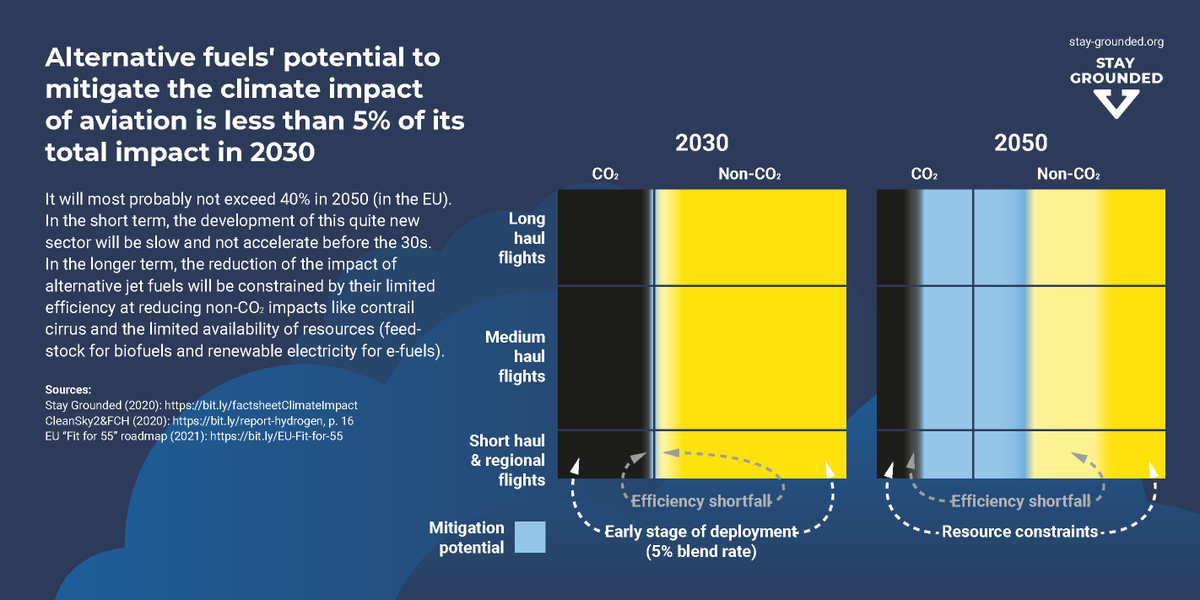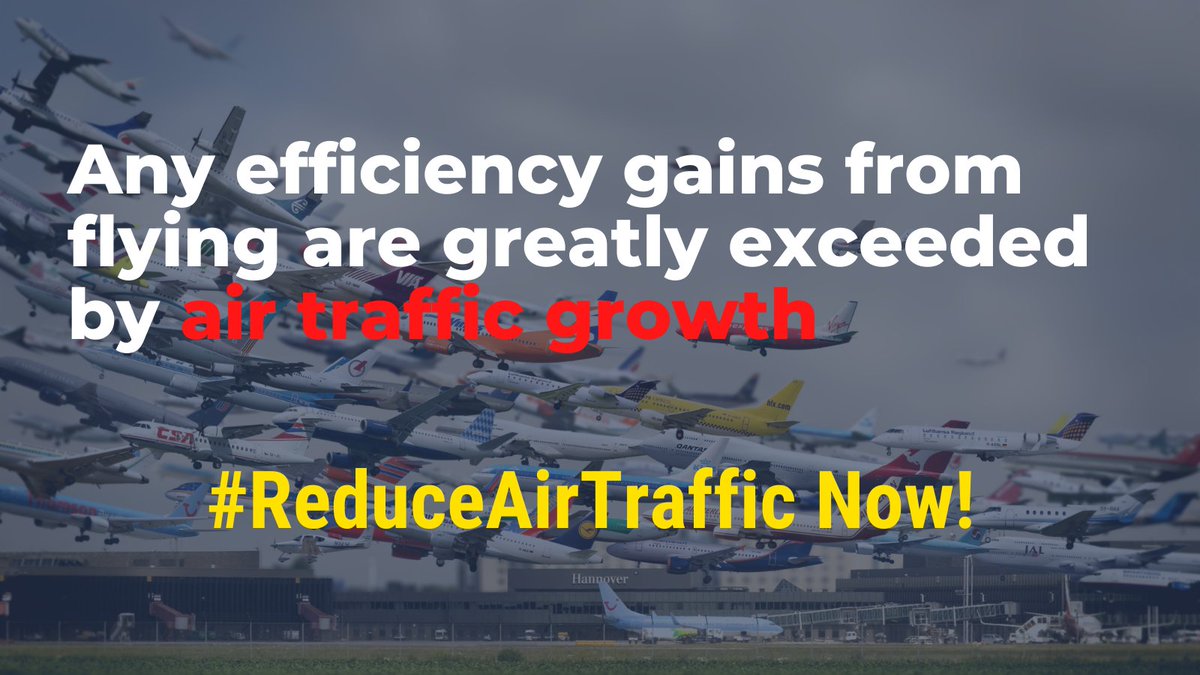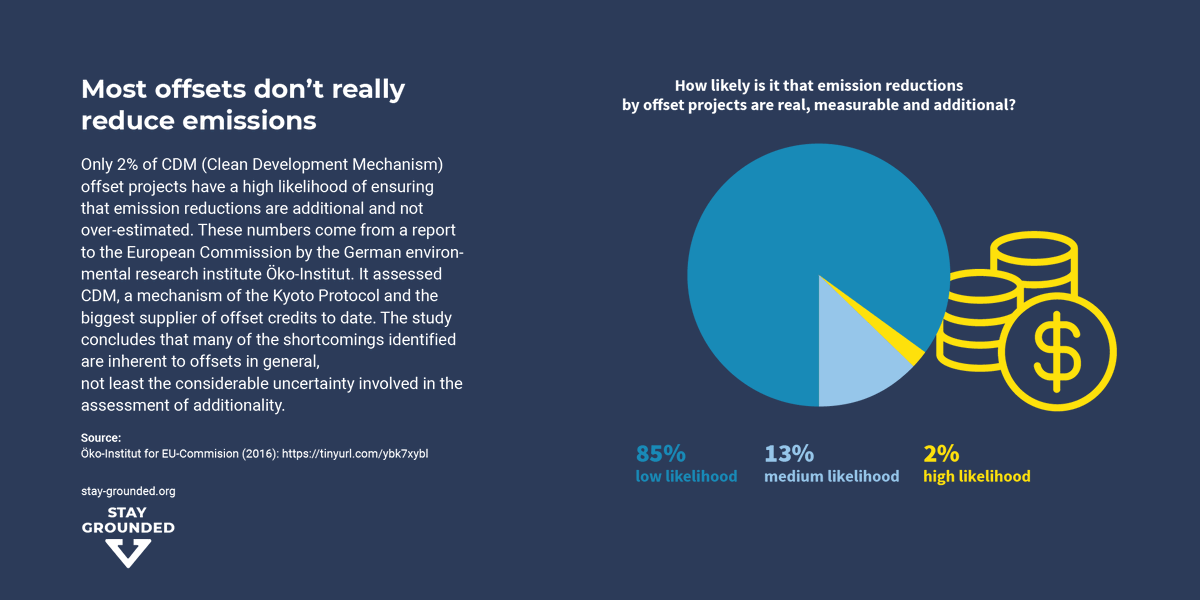
It's #COP26 and the #aviation industry has no plan - and no intention - to to do its fair share to stay below #1point5.
Instead, it's stepping up its #greenwashing.
🧵🔽 A thread about the top 5 false promises and the limits of 'green technologies' for '#SustainableAviation'.
Instead, it's stepping up its #greenwashing.
🧵🔽 A thread about the top 5 false promises and the limits of 'green technologies' for '#SustainableAviation'.

#1 Efficiency. The #aviation industry tells us that it emits less and less CO2 per kilometre. What it doesn't tell us is that air traffic is growing much faster than efficiency is improving - resulting in higher climate pollution. #ReboundEffect 

#2 Electric Flight. The aviation industry tells us the contribution of electric aircraft to reduce emissions will be significant. That's not true: the only aircraft likely to be certified this decade will be very small, we won’t see larger ones before 2050. Too late for #1point5. 

The main reason why electric aircraft will not be able to reduce a large proportion of aviation emissions for the time being: current batteries and electrical systems are far too heavy to displace most jet fuel and combustion engines. 

#3 Hydrogen Flight. The idea of #hydrogen aircraft has been around for decades - and they are still not here. We will be waiting many more years for them - and when they come, they will probably be limited in range and emissions reduction. 

#4 Biofuels. Even though airlines say they will fly on fuels made from waste and other 'sustainable sources', they do not rule out the use of first generation #biofuels from crops - which cause serious impacts such as #biodiversity loss, rising food prices and water scarcity. 

#5 E-fuels/Power-to-Liquid. At first sight, e-fuels seem to be the ultimate weapon for decarbonising #aviation. But: producing them requires huge amounts of energy and they have other disadvantages, e.g. they do not reduce non-CO2 effects of flights. 

Debunking the #aviation industry's green lies. Find all our new factsheets on our website. #Greenwashing
▶️ stay-grounded.org/greenwashing/
▶️ stay-grounded.org/greenwashing/

• • •
Missing some Tweet in this thread? You can try to
force a refresh








